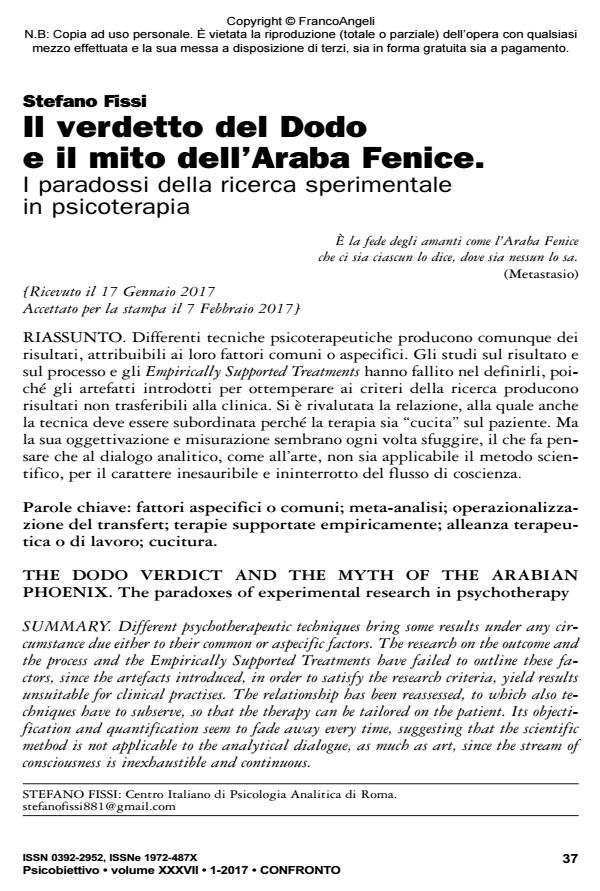The dodo verdict and the myth of the arabian phoenix. The paradoxes of experimental research in psychotherapy
Journal title PSICOBIETTIVO
Author/s Stefano Fissi
Publishing Year 2017 Issue 2017/1
Language Italian Pages 18 P. 37-54 File size 728 KB
DOI 10.3280/PSOB2017-001003
DOI is like a bar code for intellectual property: to have more infomation
click here
Below, you can see the article first page
If you want to buy this article in PDF format, you can do it, following the instructions to buy download credits

FrancoAngeli is member of Publishers International Linking Association, Inc (PILA), a not-for-profit association which run the CrossRef service enabling links to and from online scholarly content.
Different psychotherapeutic techniques bring some results under any circumstance due either to their common or aspecific factors. The research on the outcome and the process and the Empirically Supported Treatments have failed to outline these factors, since the artefacts introduced, in order to satisfy the research criteria, yield results unsuitable for clinical practises. The relationship has been reassessed, to which also techniques have to subserve, so that the therapy can be tailored on the patient. Its objectification and quantification seem to fade away every time, suggesting that the scientific method is not applicable to the analytical dialogue, as much as art, since the stream of consciousness is inexhaustible and continuous.
Keywords: Aspecific or Common Factors; Meta-Analysis; Transfert Operationalization; Empirically Supported Treatments; Therapeutic or Working Alliance; Tailoring.
Stefano Fissi, Il verdetto del Dodo e il mito dell’Araba Fenice. I paradossi della ricerca sperimentale in psicoterapia in "PSICOBIETTIVO" 1/2017, pp 37-54, DOI: 10.3280/PSOB2017-001003